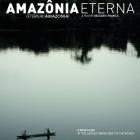Thiltges, Paul. Amazonia Eterna. Rio de Janeiro: Giros Producoes, 2012. 35 mm, 88 min. https://youtu.be/Q2zez1ydR24.
Today, the incomparably beautiful Amazon rainforest is a vast laboratory for experiments that are redefining the relationship between humans and nature. But what is the worth of this invisible commodity and who should profit from it? This cinematic film offers a sensory journey into the Amazonian ecosystem. The size of Western Europe, the Amazon holds 20% of the world’s fresh water and 10% of its animal and plant species. The fate of this vast rainforest is the fate of the whole planet. Today conservationists and the authorities are waking up to the value of the ancient tribal knowledge within the Amazon’s indigenous communities. Tradition, new technology, enterprise and sustainable economics are powering the way for man and nature to co-exist harmoniously. Experts now argue that unless we place financial value to the rainforest while it stands, it will always be worth more cut down. Macro-initiatives in farming, fishing and forestry are making use of local tribal knowledge are bringing a renewed life to communities across the Amazon basin. (Source: Adapted from Journeyman Pictures)
© 2012 Journeyman Pictures. Trailer used with permission.
This film is available at the Rachel Carson Center Library (RCC, 4th floor, Leopoldstrasse 11a, 80802 Munich) for on-site viewing only. For more information, please contact library@rcc.lmu.de.
- de Castro, Fabio."From Myths to Rules: The Evolution of Local Management in the Amazonian Floodplain." Environment and History 8, no. 2 (May, 2002): 197–216. doi:10.3197/096734002129342648.
- Goodman, D., and A. Hall. The Future of Amazonia: Destruction or Sustainable Development? London: Palgrave Macmillan, 1990.
- Raffles, Hugh. In Amazonia: A Natural History. Princeton: Princeton University Press, 2002.
- Smith, Nigel J. H. The Amazon River Forest: A Natural History of Plants, Animals, and People. New York: Oxford University Press, 1999.


